Keith Haring was an American street artist born May 4, 1958 in Reading, PA. His unique, colorful, pop-styled, graffiti-like art became a part of the NYC Street Culture in the 1980s.
His inspirations included the drawings of Dr. Suess and Walt Disney, the work of his famous friends Madonna, Jean-Michel Basquiat and Andy Warhol, socio-political themes like homosexuality and AIDS awareness, and the anti-materialistic and anti-establishment views of the Jesus Movement – all of which collectively formed what can be called his ‘signature’ style or iconography or ‘alphabet.’
Keith Haring’s Prominent Works of Art
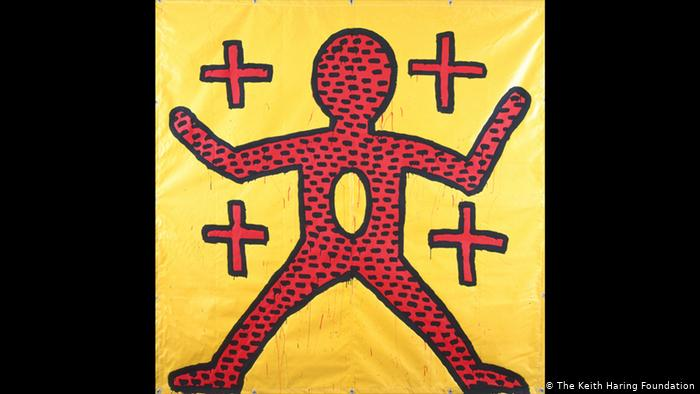
On John Lennon’s Death
The news of John Lennon’s death was expressed by Haring on an untitled vinyl painting on tarp as ‘the man with a hole in his stomach’. This symbol occasionally appears in his subsequent work over the years.
The Four Legged Creature Symbolism
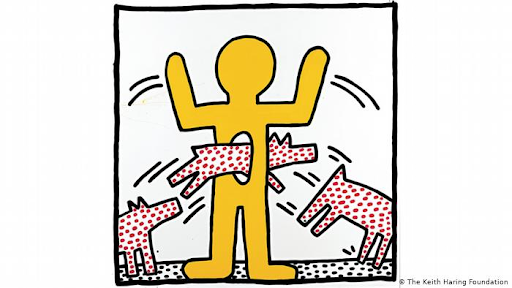
Another signature tag that he created as his art progressed was an outline of an animal, which later on began to morph into the shape of a dog, and eventually took the form of a man on all fours. The latter appears in nearly all of his sexually-explicit, and homoerotic expressions.
Evangelical Art
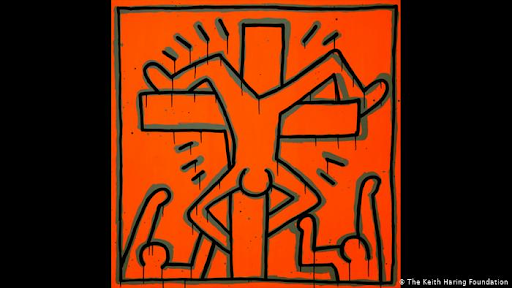
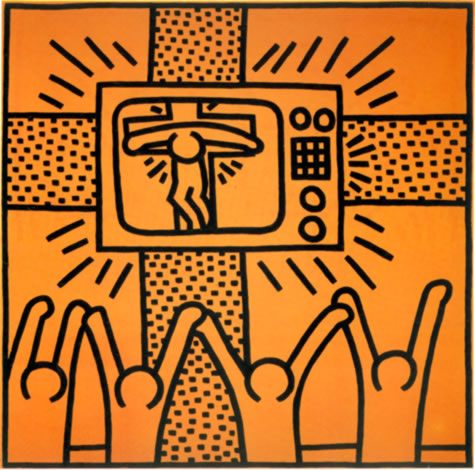
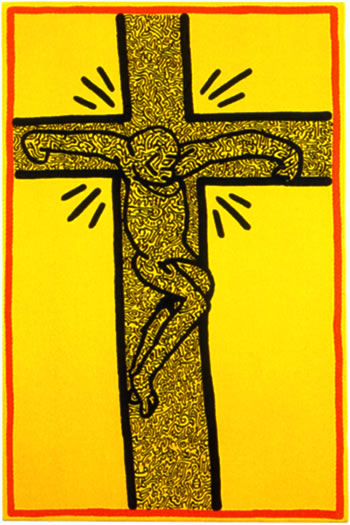
The image of a cross was used by Haring to showcase death or murder. The cross in this particular picture symbolizes the 1980s socio-political transition of Christianity from Evangelism to Televangelism in the USA.
As a teenager, he was deeply influenced by the evangelical, diverse, and barely organized Jesus Movement which was infamous for the anti-materialistic and anti-establishment values within its ranks.
Keith Haring’s Impact On Culture
Keith Haring’s drawings of chalk and primary-color paint on walls, advertising spaces, buildings, and even on cars are a common sight in NYC. His playfully radiant combination of neon yellow-red-blue-green around the signature ‘barking dog’ can be seen in the Backlight Room at Soho’s Shafrazi Gallery.
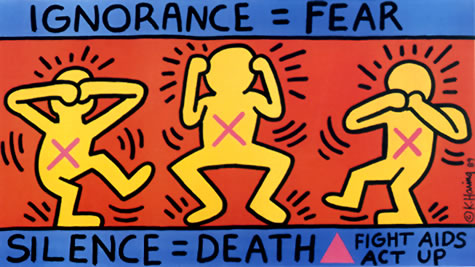
Haring’s 5 years worth of politically charged drawings are all across the easily-accessible NYC subway stations and can be viewed on the official Keith Haring Foundation website.
Keith Haring’s Impact On Fashion
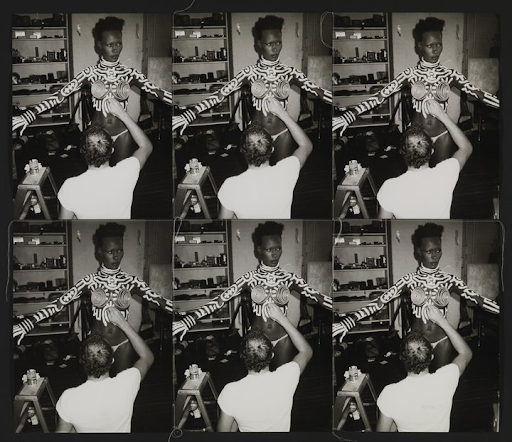
Keith Haring’s influence on fashion can be traced to the picture of Grace Jones with her arms stretched while Haring draws his signature squiggles on her body pre-performance.
These high-energy, upbeat, almost animated patterns would subsequently leave their prints in the fashion world as well. This includes collaborations with famous fashionistas like Uniqlo, Nicholas Kirkwood, Lacoste, Reebok, Adidas, Be@rbrick, Tom’s, UNIQLO, Moleskine and Coach.
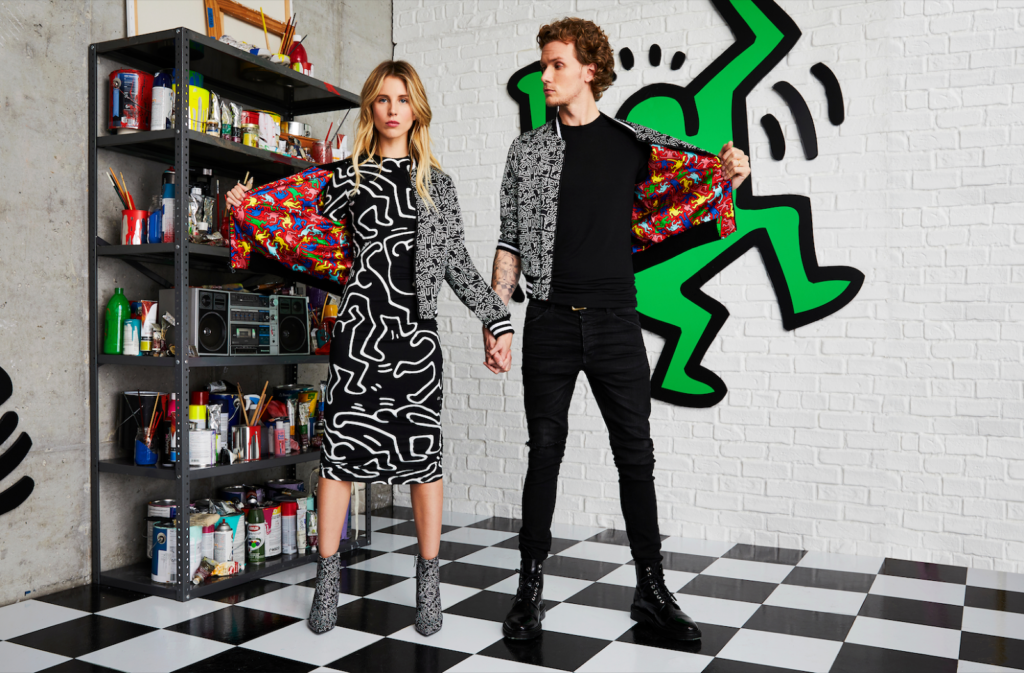
Keith Haring’s Impact On Music
Because Haring lived in and was part of the underground art scene in East Village, NYC, his social circle consisted of artists who would later on become famous; Madonna, Jean-Michel Basquiat, Andy Warhol, and Grace Jones. He frequently collaborated with all of them for their music videos, stage performances, and album cover illustrations.
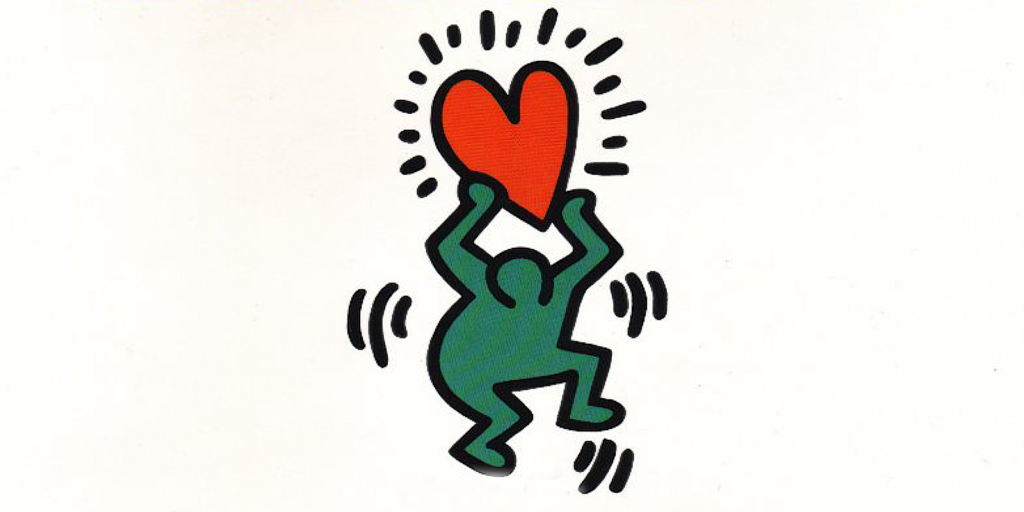
Keith Haring drew his graffiti on the body of Andy Warhol before her stage performance and for Grace Jones’s music video I’m Not Perfect (But I’m Perfect For You).
He also lent his art across all genres; from punk and pop to hip-hop and rock. The artists whose records he adorned consisted of NYC Peech Boys, Malcolm McLaren, David Bowie, Emanon, Sylvester, Bipo (the infamous ‘Life is Fresh, Crack is Wack!!’ art), Crystal Waters/Sabrina Johnson, Larry Levan and many more.
Keith Haring’s Impact On Art
The Minimalist Expression
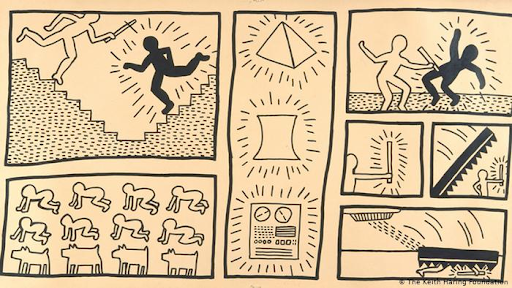
This Egyptian hieroglyph inspired artistic expression appears in Haring’s works frequently over the decades. He found it fascinating how a few simple lines can be symbolic of a wide range of emotions, a storyline, and the development of characters.
Haring said in 1978, “There is within all forms a basic structure, an indication of the entire object with a minimum of lines, that becomes a symbol.”
This simplistic style is common in the modern artists that are inspired by Keith Haring.
Keith Haring’s Flexibility of Mediums
Haring’s art was expressed through public spaces instead of canvases in a personal studio – his art was loud and out-there.
His work has inspired the new generation of artists to express their politics and art through mediums more innovative than the traditional paper, pen and canvas – so it can be enjoyed by every passerby.
Keith stayed true to his own motto, “Art is for everybody.”
Looking to explore more art genres? Head over to Joe Latimer.com for a multidisciplinary, visually stunning experience. ☮️❤️🎨
Enjoy this blog? Please help spread the word via:



One Comment